If you’re here, chances are you’re curious about needle felting. Or maybe you’re looking for a new hobby that won’t break the bank but offers endless opportunities to express your creativity? Either way, you’ve come to the right place. I’m going to share six fantastic reasons why you should give needle felting a try and show you six stunning needle felted pieces I’ve purchased from some amazing artists. Let’s dive in!
I have included Amazon affiliate links for some of the items below. This means I may earn a small commission (at no extra cost to you) if you click through and make a purchase.
Reason 1. Needle felting is inexpensive to try
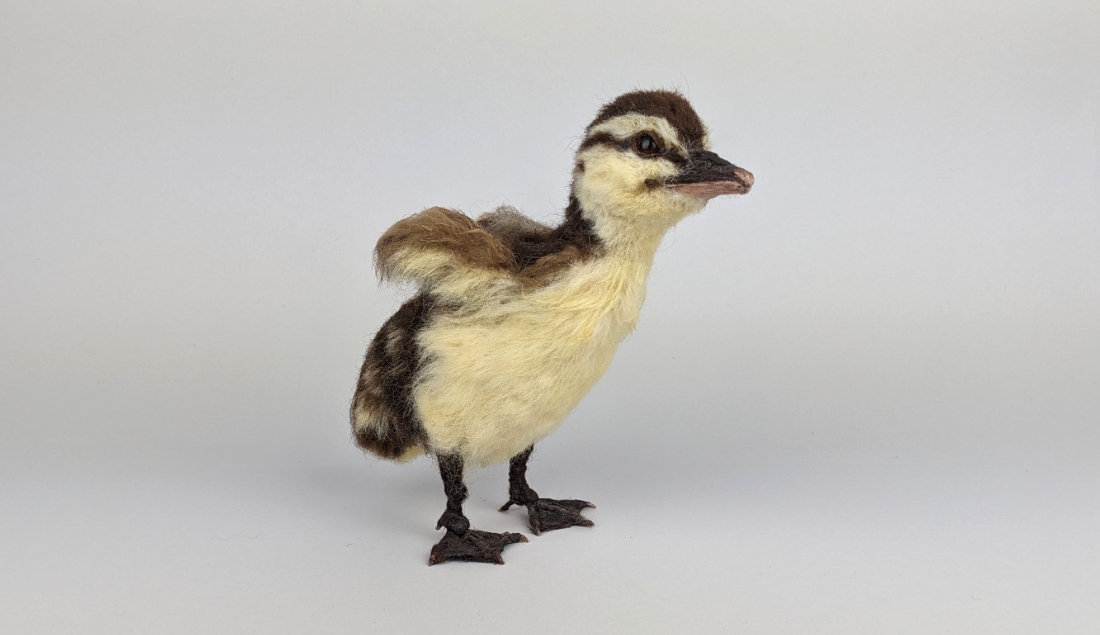
Duckling by Daria Lvovsky from my personal collection
One of the biggest perks of needle felting is that it’s incredibly budget-friendly. Unlike some crafts that require a hefty initial investment, needle felting requires just a few basic supplies to get started.
The three things you need:
- Felting Needles: These special needles have notches or barbs that catch the fibers and mat them together.
- Wool Roving or Batting: The main material used in needle felting, available in a variety of colors and textures.
- Felting Surface: A wool mat, foam pad, a burlap pouch filled with rice, or a bristle brush mat to protect your work surface and needles.
To give you a better idea of the costs, here’s a quick comparison chart of startup costs for needle felting versus other popular crafts:
| Craft | Initial Supplies Needed | Estimated Cost |
| Needle Felting | Felting needles, wool roving, felting surface | $20 – $40 |
| Knitting or Crochet | Needles or hooks, yarn, notions | $30 – $60 |
| Card Making or Scrapbooking | Paper, embellishments, adhesive, stamps, ink | $50 – $100 |
| Jewelry Making | Beads, wire, pliers, wire cutter, findings | $50 – $150 |
| Painting | Brushes, paints, canvas or paper, palette, mediums | $60 – $250 |
As you can see, needle felting is a relatively affordable craft to try. I started with the Dimensions Fox Kit. You can also find all-in-one beginner kits for around $25 like this highly-rated Woolbuddy Sea Animal Beginner Kit on Amazon.
2. There are hundreds of free beginner tutorials and videos
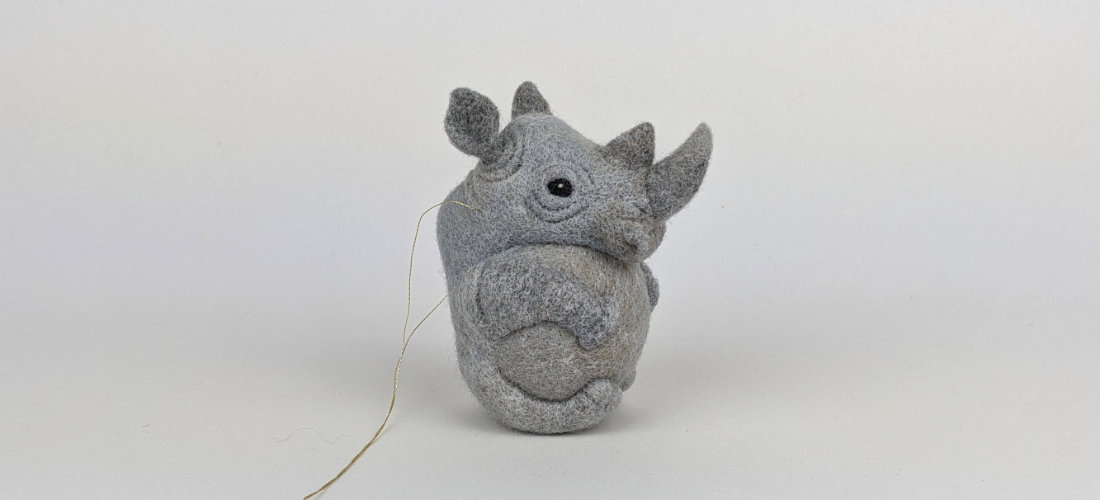
Rhino ornament by Linda Brike from my personal collection
Getting started with needle felting is easy, thanks to the plethora of talented artists and teachers who offer free online tutorials. Here are some you might want to consider:
5 free needle felting tutorials
- Easy Felted Balls (and hearts) by Olivia O’Hern: Perfect for beginners. Olivia demonstrates how to make hearts and balls you can string together into a beautiful garland.
- Needle-Felted Owls by Lia Griffith: Start with something simple like these adorable owls. You won’t be able to stop at just one!
- DIY Needle Felted Bunny from The Magic Onions: A sweet little rabbit that makes a wonderful gift for a child or adult!
- Needle Felted Gnome from Benzie Design: Create a friendly gnome to place on your mantel during the holiday season or enjoy year round.
- Needle Felted Acorns by Nourish and Nestle: A functional project that teaches you how to felt acorns (using real acorn caps) and group them to create elegant napkin rings.
5 free needle felting video projects
- How To Needle Felt For Beginners by The Felt Hub with Lincolnshire Fenn Crafts – An informative and comprehensive introduction to the basics with demonstrations.
- How to Needle Felt a Toadstool by The Hobby Bird – Whimsical and charming mushroom project.
- Needle Felting Mini 2D Landscapes by Living Felt – Step-by-step guide to creating a stunning small landscape you can turn into a magnet, brooch, or framed picture.
- Fox Christmas Tree Ornament by Julie’s Felted Friends – Julie saw an ornament in the store and was inspired to create her own version.
- Basket Bunny by Sarafina Fiber Art – Learn how to create a cute, poseable bunny. This is one of the projects I completed when I first began needle felting. If you’d like to make a different animal, Sara has designed a impressive list of them.
These are just a few free options for inspiration. I tried to include a variety of examples but as I mentioned, there are hundreds more available online.
Reason 3. Needle felting offers a wide variety of techniques to explore
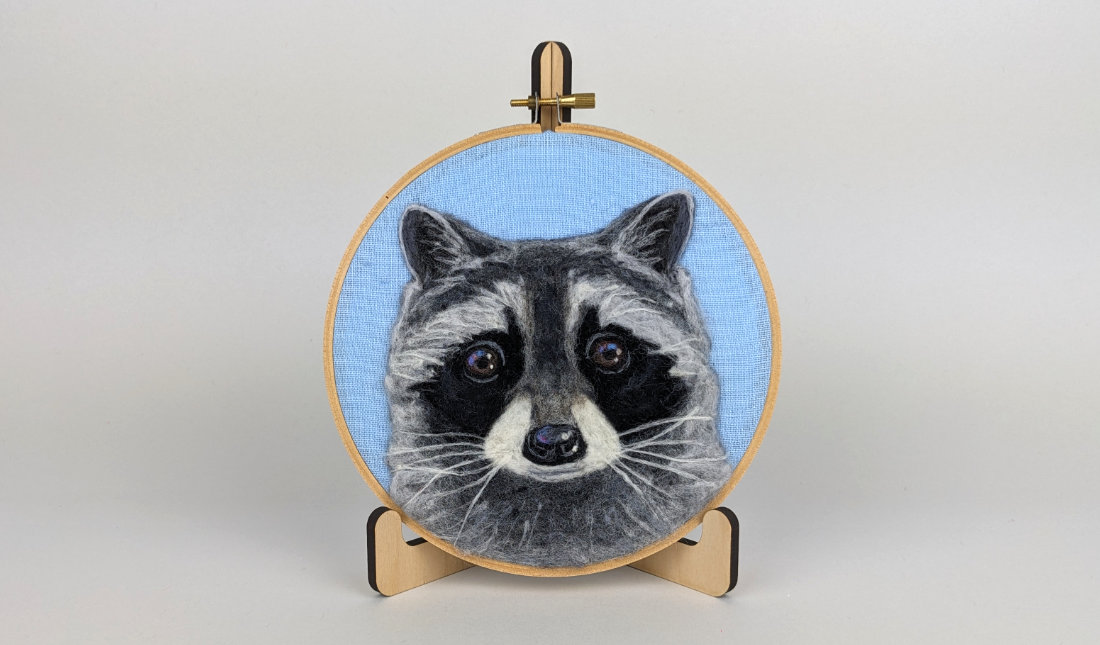
Raccoon wool painting by Dani Ives from my personal collection
Once you pick up the basics, you can continue learning new needle felting techniques and work with different materials. Here are a few of the technical skills you can expect to explore:
Basic techniques
- Making Different Shapes: Learn how to form simple shapes like spheres, cylinders, rectangles, and cones.
- Making Thin Sheets: Perfect for layering color and creating detailed pieces such as ears.
- Joining Shapes: Understand how to seamlessly connect different parts of your project.
- Adding Topcoat: Apply a final layer of fine wool to smooth, color, and finish your piece.
Advanced techniques
- Working with Armatures: Use wire to create a frame that will support more complex or semi-poseable sculptures.
- Adding Fur: Create realistic fur for animals or to add texture to landscapes.
- Adding Lines: Make delicate thin lines for intricate details or thick lines for emphasis and to create patterns. Your lines might be straight to outline an eye or organic to create a tiger’s stripes.
- Creating Facial Expressions: Bring your characters to life with realistic or whimsical features.
- Working in 2D and 3D: 2D techniques are used to make wool paintings and to add detail to a 3D surface. From flat landscapes to 3D sculptures, the sky’s the limit.
- Working with mixed media: Add clay, wax, resin, cloth, paint, pastels, and even design 3D printed elements to incorporate in your felted pieces.
Each of these techniques opens up new creative avenues and can be mastered with practice and patience.
Reason 4. After you learn the foundations, you can make almost anything
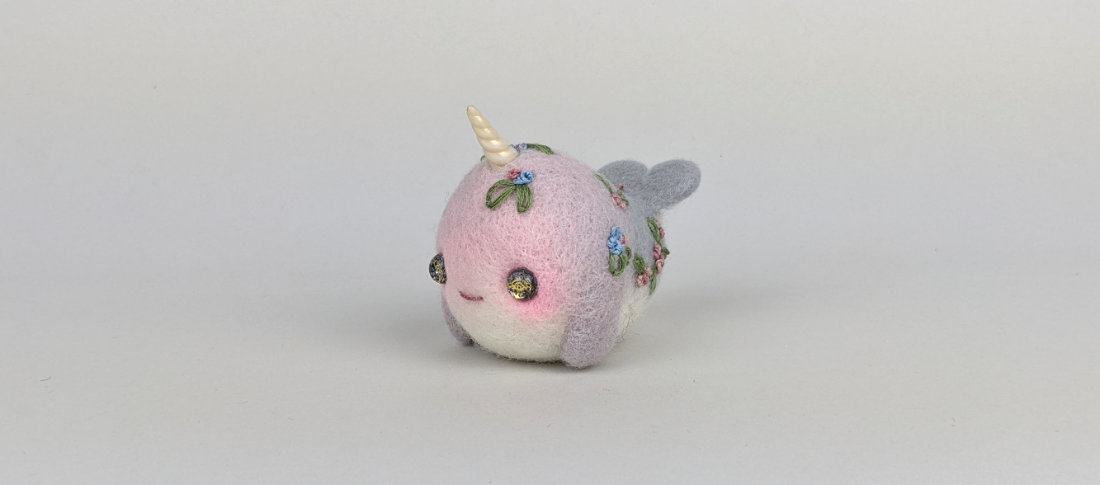
Narwhal by Bat n’Bunny from my personal collection
One of the most exciting aspects of needle felting is its versatility. I’ve included photos of six pieces I own within this post, each from a different artist. While they are all animals, they demonstrate taking different approaches and use a variety of techniques. I love them all! I shared them to show you that your imagination is the only limit to what you can accomplish as a needle felter.
Here are a few more examples to spark your creativity:
Needle felted sculptures
- Animals: From lifelike pets to fantasy creatures.
- People: Create whimsical characters or lifelike dolls.
- Miniatures: Tiny houses, food items, dioramas, or intricate fairy gardens.
Functional items
- Coasters, Potholders, and Pillows: Add a personal touch to your home.
- Decorating Wearables: Customize tote bags, mittens, hats, or even shirts with felted designs.
- Jewelry: Create unique brooches, earrings, and pendants.
2D wool paintings
- Pet Portraits: Immortalize your furry friends.
- Landscapes: Capture the beauty and awe of nature with wool.
- Abstract Designs: Experiment with colors and textures to create modern art pieces.
Reason 5. Needle felting is good for your mental health
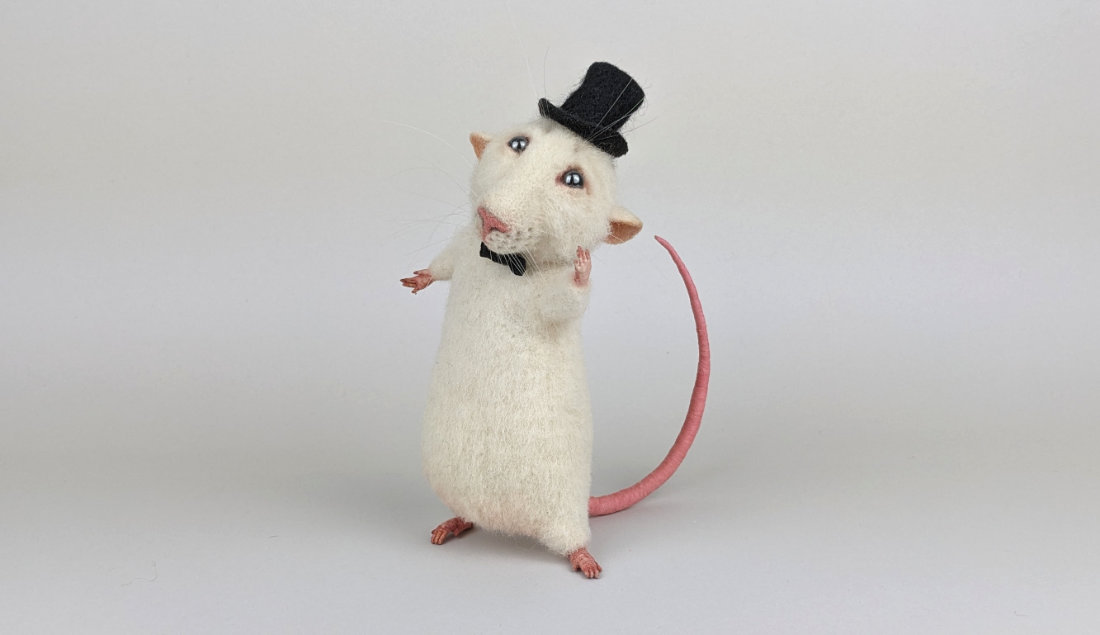
White Mouse in a top hat by Freak Felter from my personal collection
Crafting, in general, has been shown to have numerous mental health benefits, and needle felting is no exception.
Creating is good for the mind
Making needle felted items allows you to express yourself. By letting your emotions out in this healthy way, crafting helps lower stress, anxiety, and depression.
The repetitive motion of needle felting can be incredibly soothing. It’s a form of mindfulness that helps you focus on the present moment, reducing stress, and anxiety. Getting lost in the process of needle felting can also put you in a state of “flow,” which is linked to better health.
For these reasons, doing creative things like needle felting can help you feel better and have a more positive view on life.
Making handmade gifts can strengthen bonds
There’s something deeply satisfying about making a needle felted object with your own hands and gifting it to someone. It shows that you care and put thought into the gift, which makes the act personal and important.
When you’re needle felting a gift, you may be thinking about how the receiver will respond, which can make you feel closer to them and more joyful. Seeing how grateful and happy the receiver is can also give you a strong sense of pleasure and success.
Needle felted gifts that are made with love also often have sentimental value, making the bond between the giver and the receiver stronger.
Experience pride In making
Since it’s a relatively new craft, many people are not familiar with needle felting. You’ll enjoy the delight and sense of wonder that your pieces inspire. It feels good to talk about something you love to do. And when someone asks where you bought this beautiful thing, you can respond, “Actually, I made it!”
Reason 6. Needle felters reap the benefits of working with wool
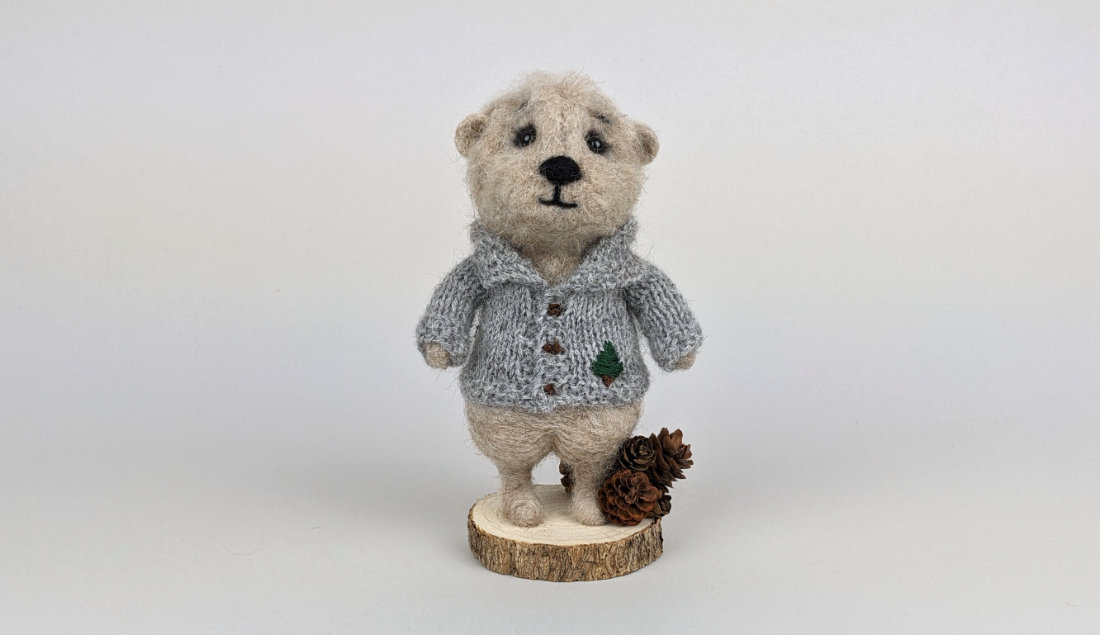
Old Sport by Chelsea McLaughlin from my personal collection
Natural fibers like wool are not only wonderful to craft with, they have environmental and ethical benefits.
Sustainable crafting materials
Wool is a renewable resource. Sheep create a fresh fleece every year, ensuring wool supply without diminishing natural resources. Wool also biodegrades. It breaks down quickly in soil, lessening its environmental impact when compared to synthetic fibers.
Wool products are long-lasting, meaning they don’t need to be replaced as often, which reduces waste. Furthermore, the production of wool generally requires less energy compared to synthetic fiber production, resulting in a smaller carbon footprint.
Wool is naturally flame-resistant, non-toxic, and does not shed microplastics, making it safer for both the environment and human health. The processing of wool can be done with minimal chemicals, especially when organic farming practices are followed, further reducing its environmental impact.
Additionally, sheep grazing aids land management. Grazing strengthens ecosystems by encouraging plant growth and minimizing fire risk. This makes wool a sustainable material that protects the environment and conserves resources.
Supports shepherds and small farms
Purchasing wool from reputable sources supports ethical farming practices and helps maintain biodiversity. You can even find and purchase wool from shepherds raising heritage and rare breed sheep!
Using natural fibers also connects you to a tradition of craftsmanship that spans centuries, adding a deeper meaning to your work.
Needle felting is a fantastic craft to explore, whether you’re looking for a new hobby, a way to unwind, or a creative outlet. It’s affordable, versatile, and offers a wealth of resources to help you get started and advance your skills. Plus, it’s good for your mental health and the environment.
So, why not give needle felting a try? Grab some wool, pick up a needle, and let your imagination run wild!
Last Updated on September 20, 2024

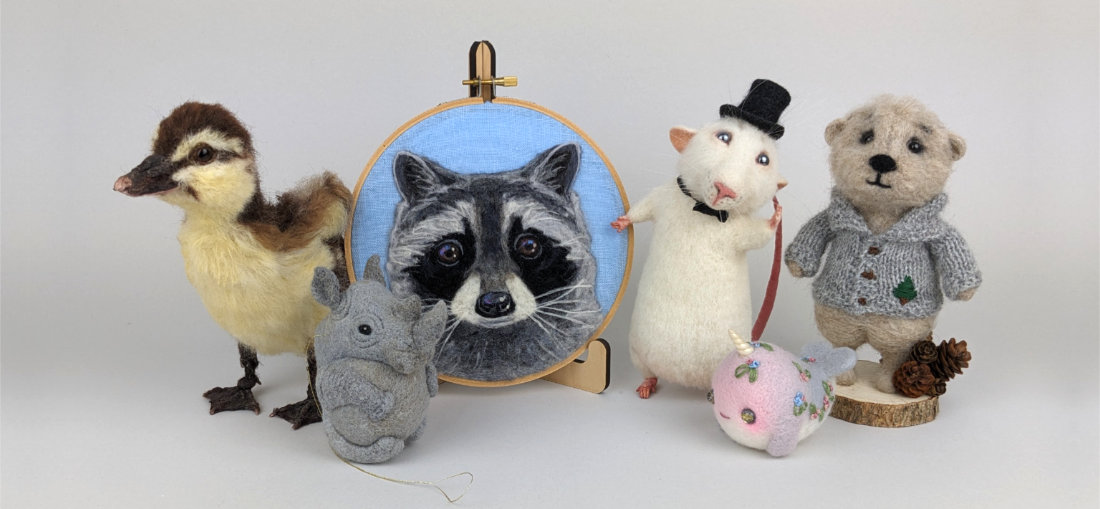
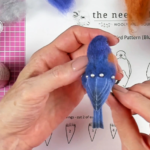
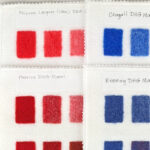
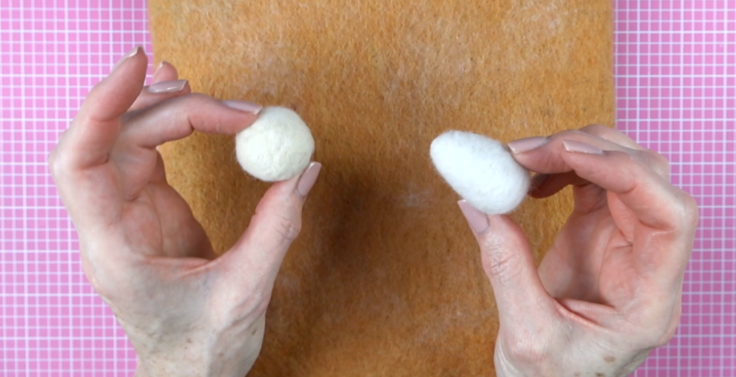 Basic shapes in needle felting: your foundation for fluffy creations (FAQ #5 video)
Basic shapes in needle felting: your foundation for fluffy creations (FAQ #5 video) 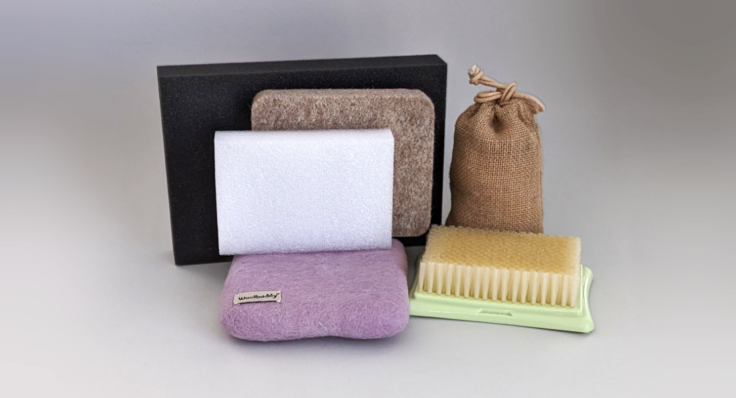 Choosing the right needle felting mat: a comprehensive guide (FAQ #4 video)
Choosing the right needle felting mat: a comprehensive guide (FAQ #4 video) 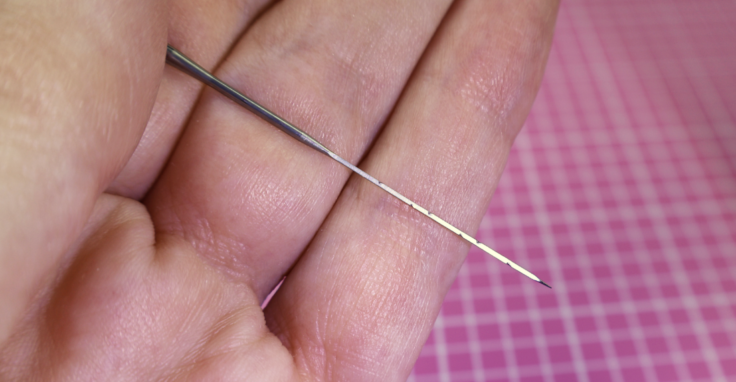 Needle felting needles: a comprehensive guide (FAQ #3 video)
Needle felting needles: a comprehensive guide (FAQ #3 video)  Ditch the overwhelm: essential needle felting supplies for beginners (FAQ #2)
Ditch the overwhelm: essential needle felting supplies for beginners (FAQ #2)